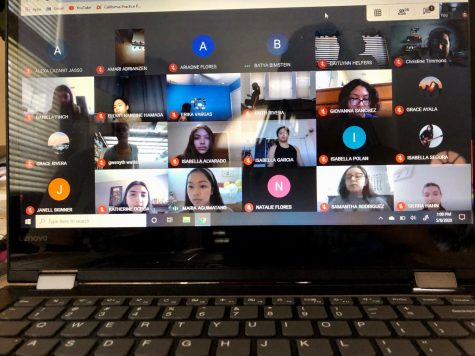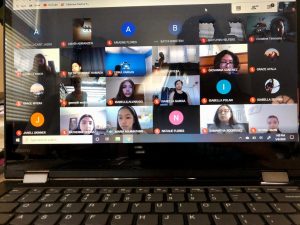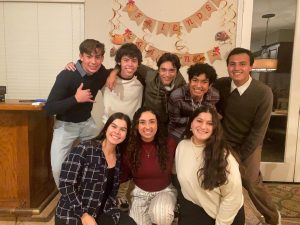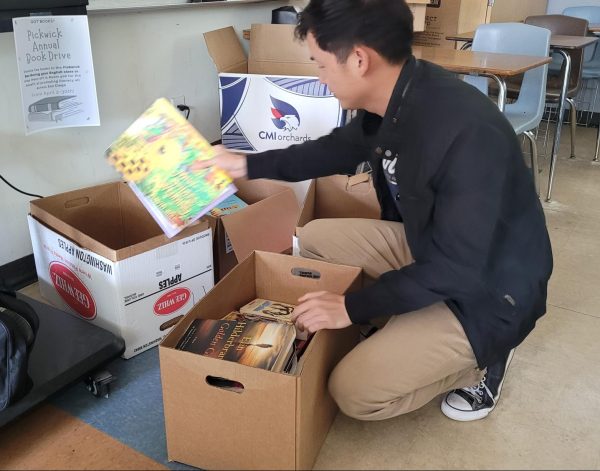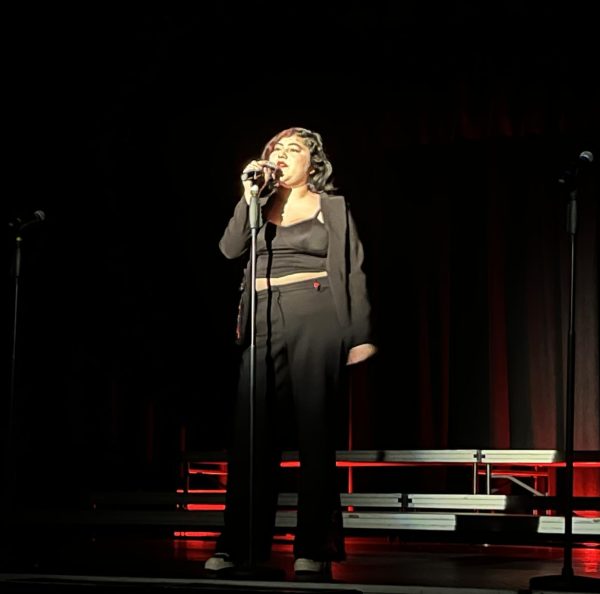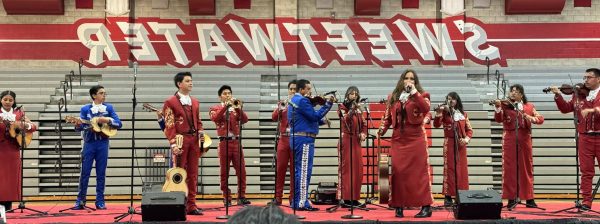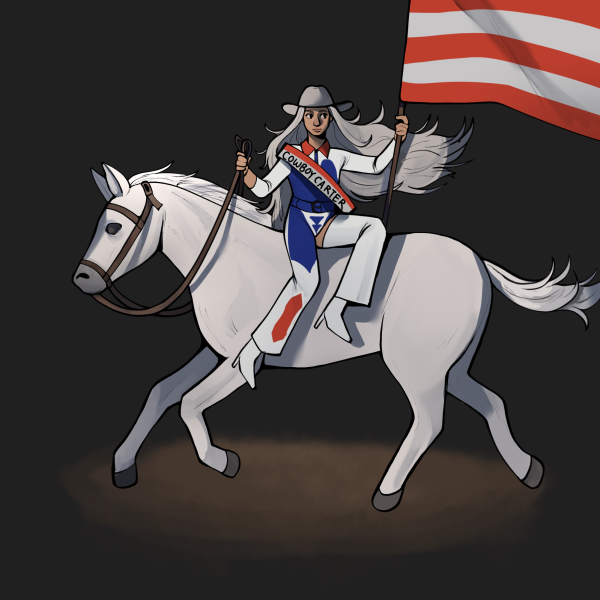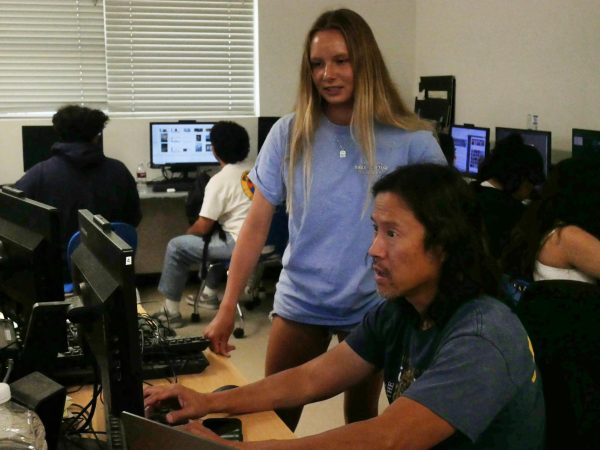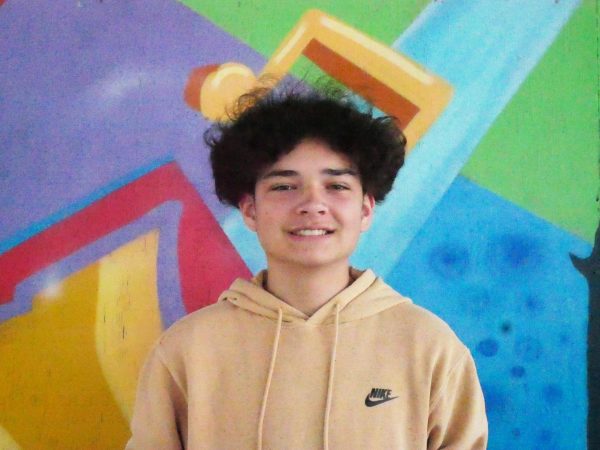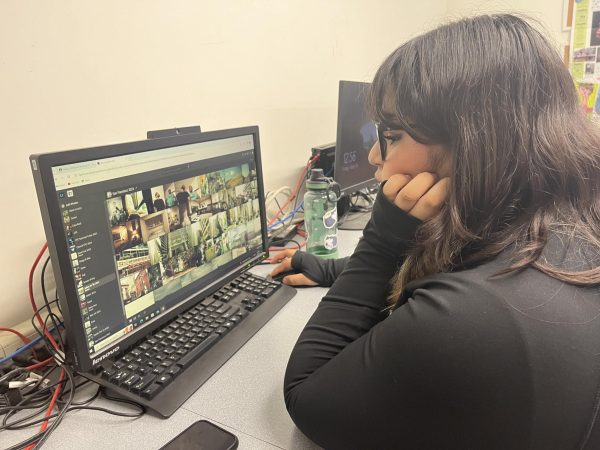Dancing to the rhythm
GTP finds ways to practice in distance learning
Untouched ballet bars, an empty dance floor and mirrors reflecting no one is what the dance room now looks like at Bonita Vista High (BVH). Every day this room used to be filled with Get to the Pointe (GTP) dancers who arrived early and would stay late to learn their choreography. However, these dancers are not letting the COVID-19 pandemic get in the way of following their passion, opting to continue on and organize a new team through virtual auditions.
According to co-captain and senior Isabella Polan, she joined GTP because it was her passion and heard that the Advisor and Dance teacher Christine Timmons was a “powerful dance teacher.” Polan continued by describing how Timmons encourages her students and guides them in their career path.
“[The audition for the dance team] was encouraging because there were so many girls at the audition and it made me want to get [into GTP] even more,” Polan said. “Seeing all the girls that were already on the dance team in the past reauditioning was reassuring knowing that they still wanted to be on the team. It was really encouraging and powerful because I didn’t know what I was getting myself into, but it was something great.”
Polan adds how the dancers can get more anxious and not feel the same way while dancing online than if they were in person. They are “not getting the experience of dancing with their peers in real life,” according to Polan. Nonetheless, she hopes that when they start dancing [in person], all of those feelings go away.
“[The dancers] are not getting that encouragement online, especially when you’re auditioning to join the dance team. You have to find that motivation yourself, which definitely makes it harder, but it’s worth it once you start,” Polan said.
When all the classes, auditions and the performances are done online, it creates a disconnect between the team dancers, Polan mentions.
“[There is more bonding in-person;] I know that from [past] experiences on the dance team. I think that [the dancers] are really missing out on the bond of all the girls,” Polan said.
In March of 2020, many dancers lost their motivation to continue dancing as school abruptly converted to online. Timmons speculates that since dancers couldn’t get the same adrenaline rush performing virtually and there was a no-harm policy to students grades at the time; this created less of an incentive for students to continue doing assignments.
“We were getting ready for our annual dance concert but nobody wanted to do a virtual concert. Since there was no synchronous learning mandated, it was hard to communicate with students,” Timmons said. “There is no audience reaction, no energy you feel with the team while performing.”
Junior and dancer Grace Aguirre has learned how to be more independent and rely on herself to learn the choreography. She explains how she is picking up the choreography faster now than previously, however, Aguirre expresses that she did not improve as much this school year due to distance learning.
“It’s hard to ask questions about dance when [the teacher and dancers] can’t see your body from every angle and can’t communicate specifically what they are looking [at] for us [to do],” Aguirre said.
Furthermore Aguirre has noticed some benefits to dancing online. For instance, she is more comfortable dancing because she is not forced to turn on the camera during class. She enjoys the freedom and learns from watching and listening.
“I like that, for us who have anxiety, we get to choose whether or not they can see us. We can just watch and learn,” Aguirre said.
When the 2020-2021 school year began, the dance team met just the same as every other class did, though one small difference was that they extended Friday classes by 30 minutes with before-school rehearsal to have more time to practice together.
“We had technique class in the beginning but just as the year progresses every year, we use class time to get ready for performances. The same was true this year but it was virtual performances for Open House and the Assemblies,” Timmons said.
As part of their daily routine, the dance team does a quick body warm-up and split into small groups responsible for choreographing and teaching a short combination. This allowed students to gain experience teaching virtually and helping the dancers work on their skills when learning new choreography. The dance team would then work on a variety of assignments such as the Open House performance, Halloween, holiday assemblies and their Social Issues video assignment.
“We learn our own choreography and teach it to the class. It was very intimidating because a lot of us weren’t turning on our cameras, so [I didn’t know if they were] actually doing it or if they were just watching me,” dancer and junior Isabella Garcia said.
There are always some positives you can find in any situation. It is also a fun challenge to change from live performance to virtual as we are learning more about producing dance on video.
— GTP Advisor and Dance teacher Christine Timmons
Garcia expresses that her physical location often affects her dance practice. She mentions that previously she was enrolled in Dance Physical Education (PE) where there was more room to dance in the dance room compared to at home. She also reveals that some of the dancers, especially the new dancers, don’t have some of the equipment that would normally be available in the dance room, like the barre, a stationary handrail to give dancers stability.
“[It can be] a little dangerous because in the dance room, the floor is elevated. When you do your jumps, it’s not hard on your knees. You’re limited at home, especially when you start to realize that you actually don’t have that much space,” Garcia said. “A lot of us don’t have outside dance experience. It’s a little bit more difficult when you have to try to find different ways to do the things you need to do without the [regular] equipment,” Garcia said.
Virtual learning has made Timmons find creative ways to provide new learning opportunities for her students. For example, Timmons invited a former GTP dancer Kevin Goh, who is majoring in film at the University of California, Santa Barbara (UCSB) to give a presentation on shooting dance performances. She also had students watch a variety of videos to see how other college dance departments were shooting videos for virtual performances.
In the classroom, Timmons has given her student leaders the responsibility of creating work for the team. The dance team’s captain and two co-captains work together to plan themes for their videos of the week. They then split the dance team into three groups and each captain teaches choreography and has students submit their videos through Google Drive. Each co-captain then edits their section and finally they put it all together.
“There are always some positives you can find in any situation. It is also a fun challenge to change from live performance to virtual as we are learning more about producing dance on video,” Timmons said.
Although distance learning has prevented GTP from performing as frequently as they have in the past and dampered connections of dancers, it hasn’t stopped them following the rhythm.
“I’m looking forward to dancing while in school, it is positive for students to get a break from the screen, get up and do something physical,” Timmons said. “The lesson is that no matter what the situation is, you can still find a way to get through it even if it isn’t perfect. Motivation and attitude are everything.”
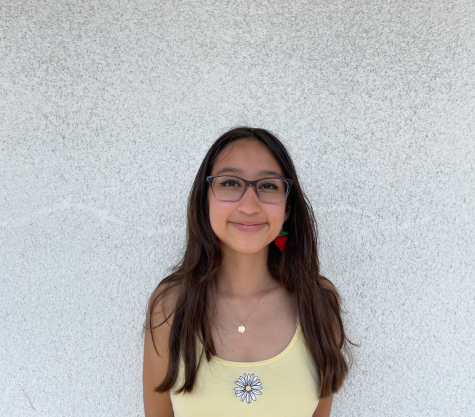
I am a senior at Bonita Vista High and this is my second year on staff. I’ve always liked how unbiased and informative the crusader was and it was a...
I am a junior at Bonita Vista High, and a second year staff member on the Crusader. I love being able to meet new people, and having conversations with...

